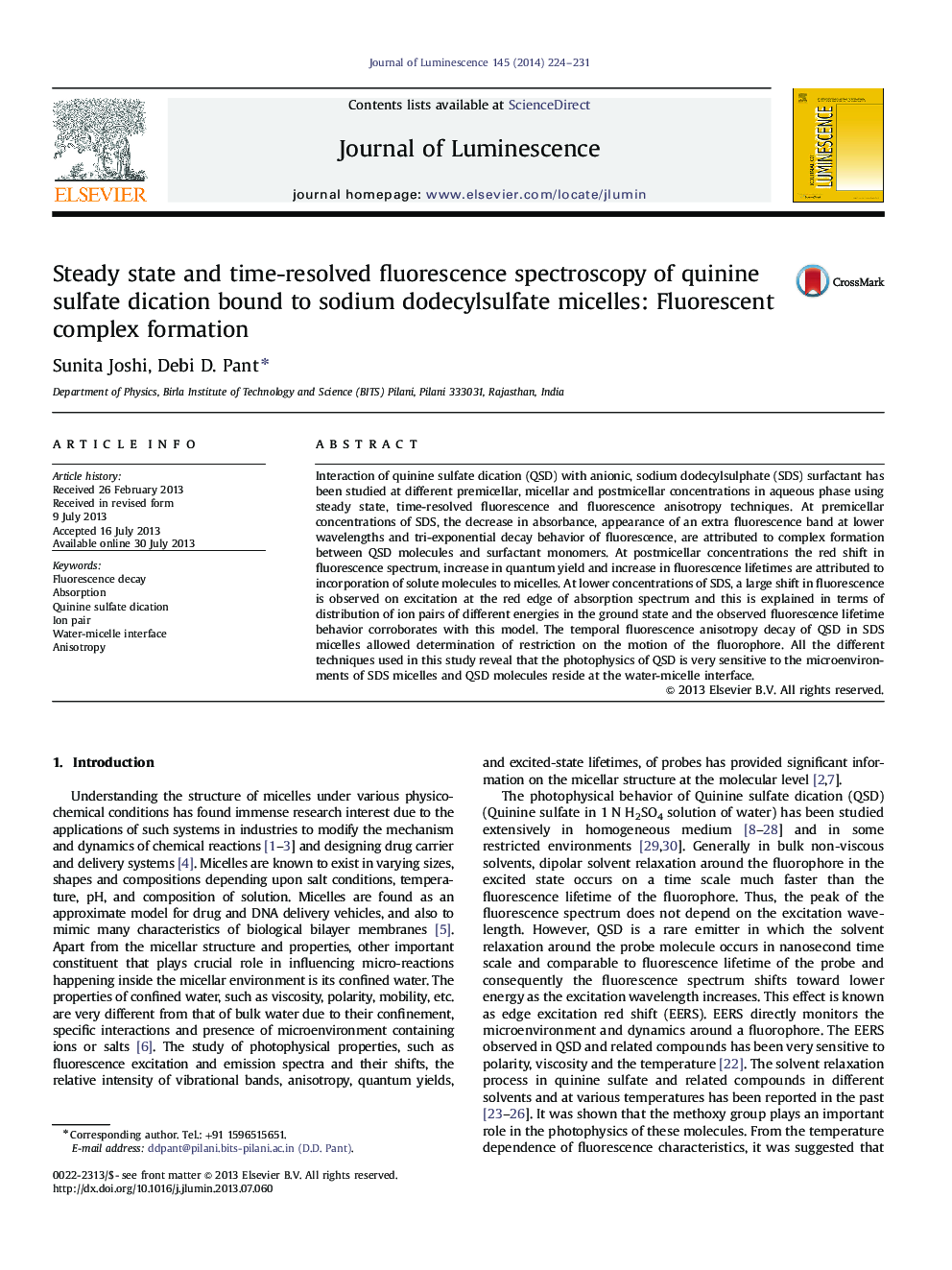| Article ID | Journal | Published Year | Pages | File Type |
|---|---|---|---|---|
| 5400166 | Journal of Luminescence | 2014 | 8 Pages |
Abstract
Interaction of quinine sulfate dication (QSD) with anionic, sodium dodecylsulphate (SDS) surfactant has been studied at different premicellar, micellar and postmicellar concentrations in aqueous phase using steady state, time-resolved fluorescence and fluorescence anisotropy techniques. At premicellar concentrations of SDS, the decrease in absorbance, appearance of an extra fluorescence band at lower wavelengths and tri-exponential decay behavior of fluorescence, are attributed to complex formation between QSD molecules and surfactant monomers. At postmicellar concentrations the red shift in fluorescence spectrum, increase in quantum yield and increase in fluorescence lifetimes are attributed to incorporation of solute molecules to micelles. At lower concentrations of SDS, a large shift in fluorescence is observed on excitation at the red edge of absorption spectrum and this is explained in terms of distribution of ion pairs of different energies in the ground state and the observed fluorescence lifetime behavior corroborates with this model. The temporal fluorescence anisotropy decay of QSD in SDS micelles allowed determination of restriction on the motion of the fluorophore. All the different techniques used in this study reveal that the photophysics of QSD is very sensitive to the microenvironments of SDS micelles and QSD molecules reside at the water-micelle interface.
Related Topics
Physical Sciences and Engineering
Chemistry
Physical and Theoretical Chemistry
Authors
Sunita Joshi, Debi D. Pant,
